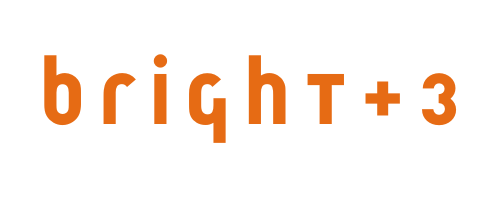Build things together: How to not drown in the seas of distrust
Social platforms no longer build for connection. We shouldn't do the same. How and why organizations can connect people, build together, and grow their power.

I have a set of questions for any new article or email or story (or broader content project) that I'm working on with an organization.
- Who is this for?
- How will they find and read, view or listen to it?
- How will this person use it? What is the action they will take?
- Finally…does this content build something? Does it connect people to each other? Does it help people work together? Does it establish and deepen trust between people, between us (the people here in the organization) and our supporter?
The goal is to lay out purpose and value to the user/reader. More than that, I want to see how (or even if) the content can connect and build.
Are we throwing calls to action and statements at people for attention, clicks and engagement? Or are we laying down bricks along a path towards a shared goal?
Social platforms have failed to answer or even address this last set of questions. As a result they have positioned themselves as burdens, not contributors. Extractors, not builders.
The platform landscape is one of programmed disconnection and soullessness. If you see that you can begin to discern something else. Something good and useful. The value of personal connection and trust.
The nonprofits, campaigns and movements that lean into trust - that use trust as a guidepost, a lighthouse, a measuring stick, and continual aspiration - can achieve beyond their means.
Communications, content, and information, stories, words, videos, photos and charts...the content we create forms the building blocks of trust.
The Anti-Trust Ocean of Today’s Content
Junk content aimed at occupying attention and increasing time on platform is running rampant. AI-driven content is only expanding the scope of the slop and pushing it into more spaces. A few examples:
Liz Pelly’s The Ghosts in the Machine explores AI-generated music on Spotify.
Brittany Bennett’s The Slop in My Morning Coffee looks at AI generated content on Spotify, YouTube and Meta.
Adam Aleksic’s Slop Capitalism and Dead Internet Theory looks at how Meta actively encourages AI content, including racist and divisive content:
Racist videos still drive user engagement through spectacle, which is kind of their entire business model. In the long run, it even helps the platforms to manufacture racially divisive discourse. The more polarized we are as a society, the harder it is to come together and challenge their hegemony.
In AI is the New Social Media, Alex Kantrowitz spells out the gleeful intentionality with which AI content and platform leaders are leaning into the idea that AI, and “meaningful” connections to bots are why people will engage in platforms:
A Harvard Business Review report published last week said ‘companionship and therapy’ is now the top use case for generative AI, replacing ‘idea generation’ from 2024. In fact, the top three use cases in the report fell under the personal and professional support category, including a brand new use case: ‘Finding purpose.’
AI generated news and newsletters are occupying the information space in many places where local news organizations have left or been weakened.
Search engines are replacing search results with AI generated summaries or answers to the question asked. This replaces a list of sites
The result is a continued closure of the Internet as a place to explore and learn.
It’s also an entrenchment of corporate power and platforms controllers of attention and intermediaries between users and organizations.
Some more questions:
- Is your time spent creating content for social platforms useful to your audience?
- Does it establish and/or deepen the trust someone has in you and your work?
- How is this content amplified (or challenged) by others who are trusted supporters or who, unfortunately, want to sow doubt and distrust?
More and more, organizations are leaning into collaborations with “creators” and social media influencers. Some are developing their own creators or what could maybe be called trusted brand channels.
The climate advocacy group Evergreen Action, for example, recently renamed its Instagram channel to We Hope This Helps. It’s an exciting shift. It’s a nod to both offering people value and being ground in values.
Will it work? That depends on so many things. One of which how much they’re willing to toss out the sort of content playbook that has dominated decades of advocacy communications–a playbook that puts policy and political precision first, assumes that only staff can be trusted, and speaks at people instead of inviting them into trust and values driven conversation.
The work of blowing up that playbook seems to be given to staff and teams who handle social media. Ironically, social platforms aren't that interested human connection, especially the unpaid kind. And social teams can't do this alone.
Connection, Value and Trust at Some Kind of Scale
The digital advocacy and campaigning space has long optimized for breadth instead of depth. Our digital campaigns are fighting monsters using the tattered script of the 2008 Obama campaign. That script tells us to run petitions and ads targeting people who are petition signers and activists and believers. Those who are most like us (our look-alikes) are most likely to sign something, get on the list and stay involved.
Makes sense.
A problem today is that the information environment - the firehose of info from 24/7 news, digital sources, email, texts, and dozens of social platforms - is constantly fighting for attention.
Loose ties are quickly snapped.
If we don’t start with trust we lose people. Even those who look like us. And we’re barely even trying to reach beyond that group.
We could reconsider why we run organizations, who they serve, and how we staff them to emphasize connection and trust.
In a nod to practicality, though, there are ways to do the work of connection and trust that don't require new money, time, people, missions and ways of working.
Deliver personal messages. Lean into automation.
- Use Loom video tours of your website, your email preference center, your donation form (who wouldn't love that?).
- Create short videos about accomplishments last month and priorities this month. One minute. Update every four weeks. Put these on the home page. Put them in the welcome email. Put them in the newsletter.
- Give people something surprising and unanticipated. A mystery gift for everyone who fills out a new subscriber survey. Or a prize for answering three questions about content hidden on the website.
Offer constant opportunities to get involved, learn more, meet and hear from others.
A few ways things to try:
- Supporter zoom calls.
- Interviews / conversations with staff or interesting people working in or adjacent to the issue. Make these live, short, shareable.
- Office hours.
- On the ground events, town halls, field trips. Document these. Create content from them. Enable people to create their own stories.
Invest in listening to and understanding what people need that you can offer. What value can your content/comms deliver?
- Surveys.
- Feedback on emails, post-donation feedback, post-action feedback.
- Focus groups.
- Pick up the phone and call people.
- Invite people to be advisors.
You have tons of expertise and content knowledge across your organization. Much of it already written up. This isn’t so much about creating something new but rather reworking what you have so that it’s accessible and useful.
All of this BUILDS something. And it invites people in to help do the building.
It's not just about optimizing processes to increase engagement and member revenue by 6.3% so we meet this year's growth goals. Though I suppose that could happen. That would be swell.
It's about flipping content and communications so that it's driven by shared value and values. It's grounded in the the idea that trust is a prerequisite to people giving their time, money and knowledge. Trust, like strong organizations, is not an individual project. It's shared. And the broader that sharing, the more powerful we become.
Illustration above by MOMO Studio on Unsplash.


